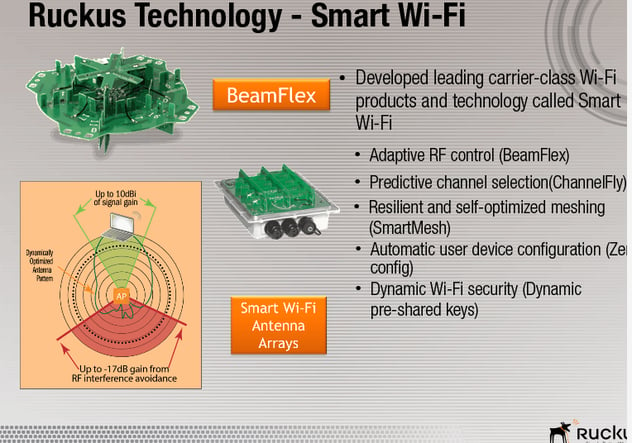Present Blog – IT Thought Leadership
Blog Present-IT thought leadership
Blog Present-IT thought leadership
IT thought leadership blog for CIOs and CTOs in Canada seeking resources to drive IT as a business contributor: hybrid cloud, infrastructure, managed services and security and IT recruitment.
 As mobile traffic surpassed wire traffic in the fall of 2014, the infrastructure behind public Wi-Fi is becoming less efficient and more costly to deploy. With an increasing number of mobile devices using Wi-Fi as their main Internet connection and with users choosing Wi-Fi as soon as it is available, the traditional Wi-Fi limits are soon reached.
As mobile traffic surpassed wire traffic in the fall of 2014, the infrastructure behind public Wi-Fi is becoming less efficient and more costly to deploy. With an increasing number of mobile devices using Wi-Fi as their main Internet connection and with users choosing Wi-Fi as soon as it is available, the traditional Wi-Fi limits are soon reached.
The installation and use of a traditional Wi-Fi infrastructure in high mobile traffic areas are hindered by the following limitations:
• The difficulty of creating an efficient plan to install access points;
• Overrun channels due to too many users connected to the same access point;
• An ever-changing mobile access point;
• The complexity of access point management by the WLAN controller.
For these reasons, the quality of the signal, uncertain to begin with, is greatly affected by interferences.
However, things are changing thanks to new technologies like Smart Wi-Fi.
All high-traffic locations are subject to mobile traffic challenges:
• Universities
• Hotels
• Hospitals
• Congress and conference centers
• Stadiums and arenas
• Shopping centers
• Logistics centers
• Big companies
• Cities
The benefits of implementing a Smart Wi-Fi infrastructure
Companies and organisations planning on deploying a Smart Wi-Fi network will experience the following 3 types of benefits:
1. Optimisation of investment and installation costs
The extended range offered by the Ruckus antenna allows for more coverage using almost half the number of access points as standard equipment.
The whole WLAN Ruckus infrastructure can be implemented in about half the time it takes for traditional WLAN, which reduces the costs accordingly.
2. Simplified infrastructure management
The ZoneFlex system and its FlexMaster application make the infrastructure much easier to manage by offering maximum back up and the possibility of increasing the number of access points in a simplified manner.
3. Improved user experience
But more than financial and operational gains, the implementation of a Smart Wi-Fi infrastructure greatly improves the quality of the customer or user experience. This also leads to competitive advantages as well as a possible increase in customer traffic.
How does the Ruckus Smart Wi-Fi work?
The patented and developed Smart Wi-Fi technology allows you to solve typical Wi-Fi problems such as interference, stability, and signal range levels.

• Adaptive signal steering (BeamFlex): This smart antenna system identifies each user and sends them a radio signal by following their movements. The system is able to reconfigure itself at all times to avoid interferences; as a result, the connection to the signal is more consistent.
• Predictive channel selection (ChannelFly): This technology automatically detects overrun channels and redirects users toward less-used ones. The capacity per canal is therefore increased up to 50%, and interferences are reduced.
• Resilient networking with automatic optimisation (SmartMesh): replaces traditional WLAN (Wireless LAN), where Ethernet cable is used for access points, with a wireless network and a centralised management of these access points.
Important
The increased number of mobile devices and an unparalleled use of Wi-Fi are paving the way for a massive deployment of Smart Wi-Fi infrastructures in order to promote collaboration, innovation, and consumption.
As Smart Wi-Fi infrastructure deployments multiply, organisations and companies may still benefit from the competitive advantages brought about by this technology.
Image credit: Ruckus
About Blog
The right use of technology addresses business challenges and drives business growth in all areas of an enterprise. We hope this blog will offer insight into developing strategies and tactics to enable you to identify those key drivers of growth and keep pace with and anticipate the rapid technology change of today.
Posts by Topic
- IT infrastructure (116)
- IT security (92)
- IT Innovation (59)
- Trends (51)
- Cloud (47)
- Managed services (46)
- Mobility (38)
- Digital transformation (29)
- CIO/IT leaders (28)
- Events (28)
- News (23)
- Microsoft 365 (17)
- Security (17)
- IBM (16)
- Disaster recovery (DR) (14)
- High availability (12)
- Recruitment (12)
- Storage (12)
- Big Data (11)
- Collaboration (11)
- AI (9)
- Case study (9)
- Office 365 (9)
- BYOD (8)
- Customer Experience (8)
- Hybrid Cloud (7)
- Current events (6)
- SAP Hana (5)
- Business intelligence (BI) (4)
- Converged infrastructure (4)
- Convergence / Hyper-convergence (4)
- Virtualization (4)
- Copilot (3)
- Future of retail (2)
- Retail (2)
- trend (2)
- Backups (1)
- Beacon (1)
- Blog Migrations (1)
- Contests (1)
- Infrastructure TI (1)
- Innovation TI (1)
- IoT (1)
- MDM (1)
- Stockage (1)
- Virtualisation (1)
- blockchain (1)
- cio (1)
- replication (1)
- Étude de cas (1)


